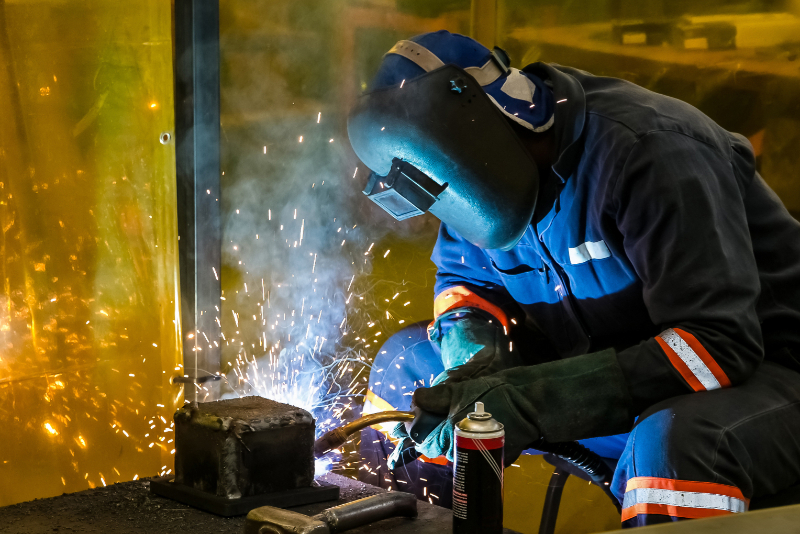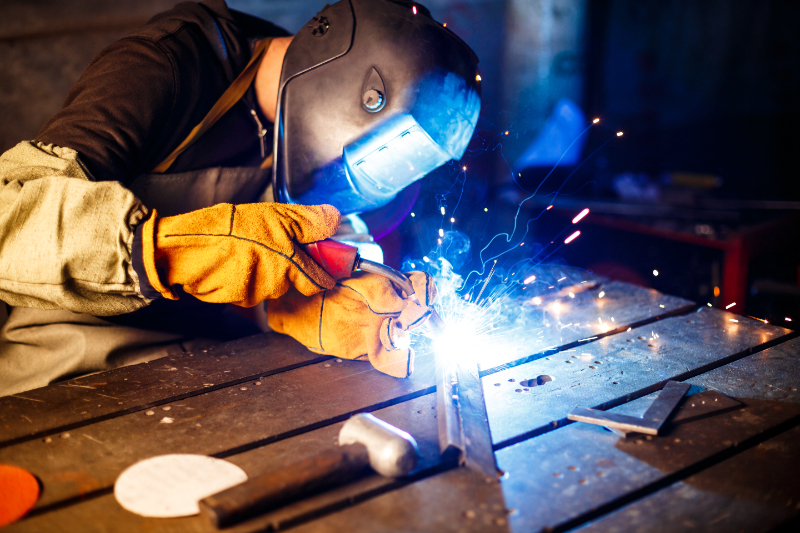What safety equipment is used for welding? Welding Supplies Coventry are Welding Equipment Suppliers for Coventry, Nuneaton, Lutterworth, Royal Leamington Spa, Rugby and Warwickshire. Find out what type of eye and face protection is appropriate for a welding task and more about personal protective equipment needed for welders.
What Type Of Eye And Face Protection Is Appropriate For My Welding Task?
There are many types of eye and face protection you can use when welding. Each type is categorised by the CSA Standard Z94.3-20 "Eye and Face Protectors" specification.
These types of eye and face protection are placed into different classes, depending on their use. Manufacturers place markings on eye and face protection to determine which class their items fall into. Common classifications for eye and face protection used in welding include:
Class 2C - non-ventilated / direct goggles with non-ionising radiation protection
Class 3 - welding helmet
Class 4 - welding hand shield
Class 6 - non-ionising radiation face shield
Class 7 - respirator facepiece for non-ionising radiation protection

If you are carrying out the following welding tasks, you must use full face protection, either a hand shield or welding helmet:
Arc welding
Plasma arc cutting
Plasma arc gouging
Plasma arc welding
Air carbon arc cutting
Gas cutting doesn't produce light as intense as arc welding, cutting or gouging. So, when gas cutting, you don't need to use heavier shade filter lenses. You can also replace a welding helmet with appropriate goggles.
Personal Protective Equipment Needed for Welders
While robotic welding is coming on leaps and bounds, there are still those intricate jobs that need a human touch. So, until we can leave the dangerous work to the machines, we need to make sure our welders are safe when at work.Workplaces that see a lot of welding are full of hazards.
If you cannot completely remove these hazards, industry experts recommend engineering controls. When this isn't possible, personal protective equipment (PPE) is your last resort. While you should do everything to make your workplace safe before requiring PPE, if you need to use it, then you definitely should.
Protective equipment is the best way to safeguard employees from hazards. They also prevent injuries from accidents or unforeseen risks. Employees working with or around welding equipment need a range of PPE to keep them safe. The following is a list of the necessary equipment that helps you eliminate the risks involved with this hazardous job:
There are many hazards that eye and face protection have to guard against. Welders are exposed to UV radiation, sparks, hot metal and flying objects during their work.
Therefore, a welding helmet, welding beanie, face shield, safety glasses or goggles are necessary. Again, any of these items worn by a welder must comply with appropriate safety standards. Checking the manufacturer's markings will tell you what a particular type of protection guards against and to what level.
When there is enough space in the work area, welders should have their own booths that are closed off to other employees. Each booth should be made of non-combustible, UV-protective screens or curtains. These screens or curtains must also allow air circulation at ground level.
Other employees near these booths must also be protected from UV radiation. Either by UV-protective screens or with their own PPE, such as safety goggles. You may also need a "Hot Work" permit if welding will take place out in the facility.
Hand protection is the most common type of protection worn by welders. Extreme heat, sharp objects and flying sparks are all hazards that welders encounter throughout the day. So, professional welders will need a range of gloves or hand protection to remain safe at work.
Hand shields, cut-resistant, welding and leather gloves all offer protection from welding hazards. These gloves are governed by ANSI standards, such as ANSI /ISEA 105 for cut-resistant gloves. So, depending on the type of welding being done, you must ensure the right gloves are being used.
Skin protection is also vital when mitigating the risks of welding. Clothing with polyester, acetate or acrylic materials should never be worn.
These materials are flammable and will melt onto the skin when burnt. Therefore, pure wool or cotton fabrics with flame-retardant coatings make the best clothes for welders.
Flying sparks, falling objects and hot slag also pose a threat to a welder's feet. For the best protection, high-top leather boots are ideal.
You might also consider welding spats for added protection. Any safety shoes worn must adhere to ANSI Z41.1-1991 or ASTM F2413-05 standards
Hearing protection is also a necessity when welding. Exposure to noises above 85 dBA (decibels on the A scale of your sound level meter) is hazardous.
If your workplace experiences noises above this level, you need to implement a hearing conservation programme. There is a wide range of comfortable hearing protection available, from earplugs to full earmuffs. Remember that all hearing conservation programmes must comply with OSHA 29 CFR 1910.95 regulations.
Respiratory protection is also necessary to prevent toxic gases, fumes and dust from harming your employees. You can perform air quality testing in the booths your welders work in to identify any hazards. If there is a risk, ventilation systems, fume hoods and local exhaust systems should be used.
The 29 CFR 1910.1000 (Toxic and Hazardous Substances) specification limits the maximum exposure employees are safely allowed to undergo. This applies to toxic gases, fumes and dust. The safety measures you need to take depend on the level of exposure in a particular area.
At all times, welders need to have access to safe, breathable air when working. If your employees do need respirators, you need to have an appropriate respiratory protection plan in place. This plan must meet the requirements set out in OSHA Respiratory Protection Standards 29 CFR 1910.134.
Tips When Using Protective Clothing?
Here is what you should be doing when using protective clothing:
Wear 100% wool or cotton clothing. This should be heavy and tightly woven to protect from the hazards of welding, including hot metal, sparks, flames and UV radiation and ensure all clothes are free of flammable contaminants, such as oil or grease.
Make sure to follow the manufacturer's instructions regarding flame-retardant fabric washing. Heavy-duty cleaning products, such as bleach, hydrogen peroxide and chlorine can damage these fabrics and reduce their flame resistance.
Always use long-sleeved shirts with cuffs and collars that fasten securely. Dark colours are also the best for limiting light reflection.

Ensure any pocket openings are taped over or covered with flaps to prevent sparks and hot metal from going into them as well as checking your trouser legs cover the tops of boots and have no cuffs on them which could catch falling sparks. Any tears, holes or frayed edges to clothes must also be repaired asap.
Only wear tall boots that can be entirely laced up to prevent sparks from falling into them. Preferably with spats or fire-resistant boot protectors on top of your trousers and boots. These also prevent hot sparks from falling into the top of boots. Use gauntlet-style gloves or protective sleeves made from leather to protect wrists and forearms as leather is also a great electrical insulator.
Using a leather apron to cover your chest and lap from spark spray. This is an important piece of safety equipment whether you are standing or sitting. Make sure to layer your clothing too, allowing you to remove items when you get too warm. Sweating in cold weather is not advised. While leather jackets are protective, they don't breathe well, which can lead to increased sweating when overdressed.
Ensure all ignition sources, such as cigarette lighters or matches are removed. Leaking lighter fluid or match heads can catch fire when struck by welding sparks. Employing a spark shield to prevent hot sparks from reaching any potentially flammable clothing or materials
Always wear a face shield to guard against UV radiation and flying debris and always wear a fireproof balaclava or skull cap beneath your welding helmet to prevent burns and UV radiation.
Never wear rings or loose jewellery AND never wear clothes made from synthetic materials. These fabrics are highly flammable and will melt under high temperatures.
Are you looking for welding equipment suppliers in Coventry and Warwickshire. Contact our welding equipment specialists working across Coventry, Rugby, Oxford and the surrounding areas.


